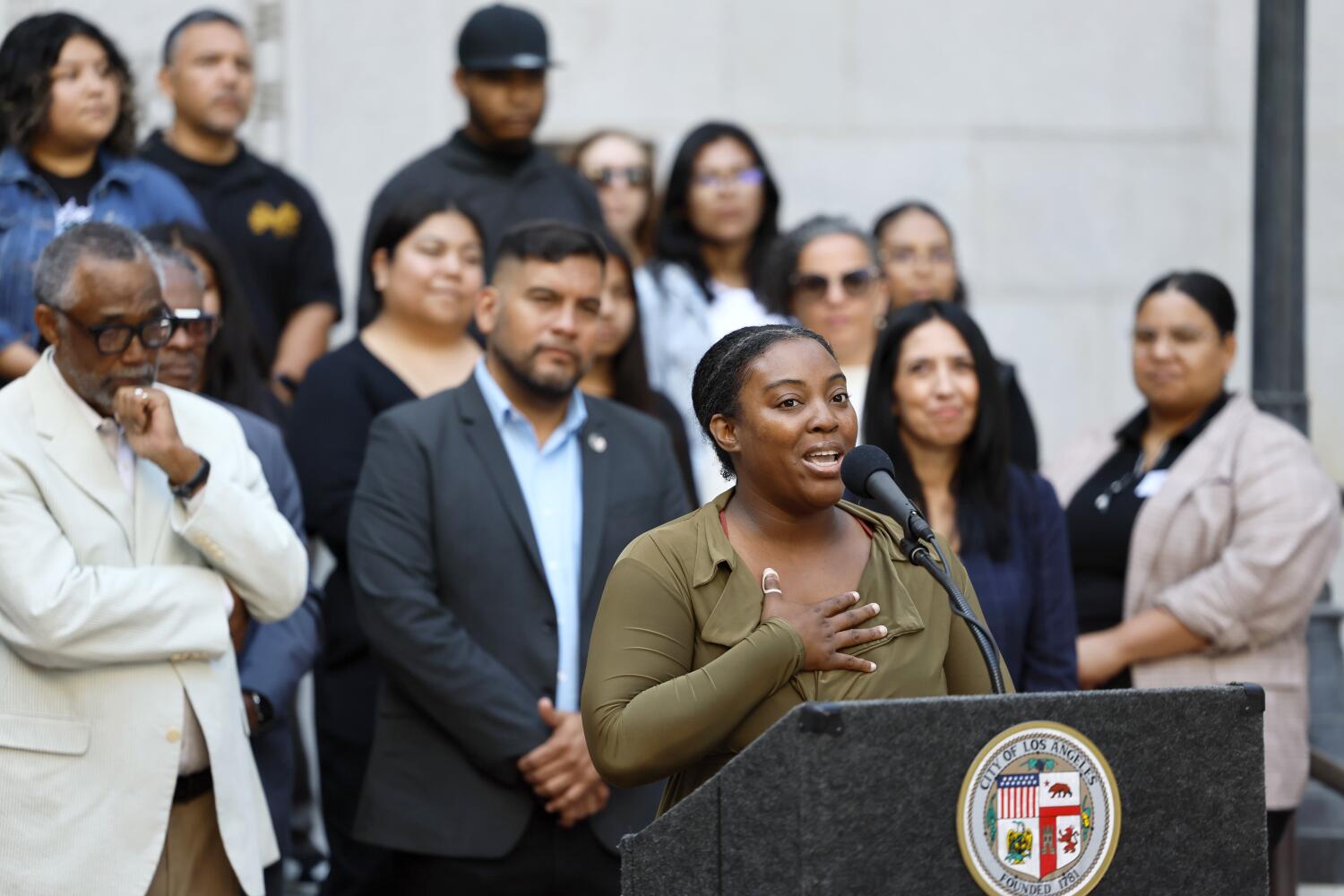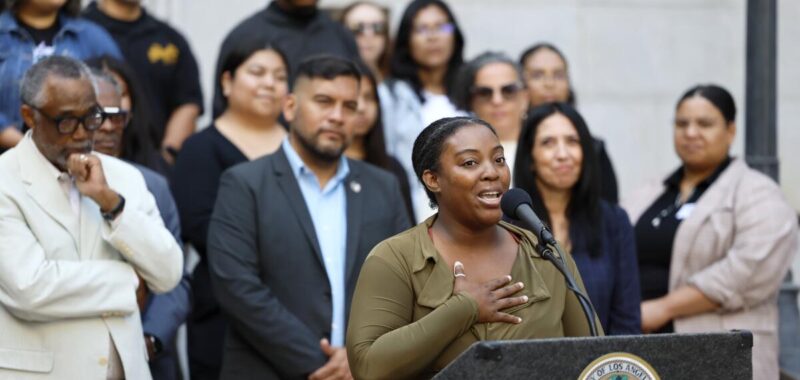
Some of L.A.’s poorest families received cash assistance of $1,000 a month as part of a 12-month pilot project launched nearly three years ago. There were no strings attached and they could use the money however they saw fit.
Now, a new study finds that the city-funded program was overwhelmingly beneficial.
Participants in the program experienced a host of financial benefits, according to an analysis co-authored by University of Pennsylvania and UCLA researchers. Beyond that, the study found, the initiative gave people the time and space to make deeper changes in their lives. That included landing better jobs, leaving unsafe living conditions and escaping abusive relationships.
“If you are trapped in financial scarcity, you are also trapped in time scarcity,” Dr. Amy Castro, co-founder of the University of Pennsylvania’s Center for Guaranteed Income Research, told The Times. “There’s no time for yourself; there’s no time for your kids, your neighbors or anybody else.”
The Basic Income Guaranteed: Los Angeles Economic Assistance Pilot, or BIG:LEAP, disbursed $38.4 million in city funds to 3,200 residents who were pregnant or had at least one child, lived at or below the federal poverty level and experienced hardship related to COVID-19. Participants were randomly selected from about 50,000 applicants and received the payments for 12 months starting in 2022.
Castro and her colleagues partnered with researchers at UCLA’s Fielding School of Public Health to compare the experiences of participants in L.A.’s randomized control trial — the country’s first large-scale guaranteed-income pilot using public funds — with those of nearly 5,000 people who didn’t receive the unconditional cash.
Researchers found that participants reported a meaningful increase in savings and were more likely to be able to cover a $400 emergency during and after the program. Guaranteed-income recipients also were more likely to secure full-time or part-time employment, or to be looking for work, rather than being unemployed and not looking for work, the study found.
“Instead of taking the very first job that was available, that might not have been a lasting, good fit for the family, [the participants were] saying, ‘Hold on a minute, I have a moment to sit and think and breathe, and think about where I want my family to be,’ ” said Dr. Stacia West, also a co-founder of the University of Pennsylvania’s Center for Guaranteed Income Research.
In a city with sky-high rents, participants reported that the guaranteed income functioned as “a preventative measure against homelessness,” according to the report, helping them offset rental costs and serving as a buffer while they waited for other housing support.
It also prevented or reduced the incidence of intimate partner violence, the analysis found, by making it possible for people and their children to leave and find other housing. Intimate partner violence is an intractable social challenge, Castro said, so to see improvements with just 12 months of funding is a “pretty extraordinary change.”
People who had struggled to maintain their health because of inflexible or erratic work schedules and lack of child care reported that the guaranteed income provided the safety net they needed to maintain healthier behaviors, the report said. They reported sleeping better, exercising more, resuming necessary medications and seeking mental health therapy for themselves and their children.
Compared with those who didn’t receive cash, guaranteed income recipients were more likely to enroll their kids in sports and clubs during and after the pilot.
Los Angeles resident Ashley Davis appeared at a news conference Tuesday about the study findings and said that her health improved because she could afford to buy fruits, vegetables and smoothies. Before, she was pre-diabetic and “my cholesterol was going through the roof,” Davis said.
“I was neglecting my own needs,” said Davis, who described herself as a single mother of a special-needs child. She switched careers and is now studying to be a nurse, she said.
Abigail Marquez, general manager of the Community Investment for Families Department, which helped oversee BIG:LEAP, said she’s spent 20 years working on various anti-poverty programs.
“I can say confidently that this is by far the most transformative program,” Marquez said.
BIG:LEAP was one of the largest of more than 150 guaranteed-income pilot programs launched nationwide in recent years. The program was funded through the city budget and included $11 million that city leaders moved from the Police Department budget in response to nationwide protests after the murder of George Floyd by a Minneapolis police officer in 2020.
Despite the positive research findings, programs like BIG:LEAP have raised concerns among some taxpayer groups.
“It’s simply wrong for the city government to take tax dollars earned and paid by people who are trying to pay their own bills and transfer that money to other people chosen by the government to receive it,” the Howard Jarvis Taxpayers Assn. said in a statement. “Guaranteed-income programs are appropriately funded voluntarily by charitable organizations and foundations, not forcibly through the tax code.”
Councilmember Curren Price, whose South Los Angeles district includes some of the city’s most impoverished neighborhoods, introduced a motion Tuesday to continue a version of the pilot with a focus on people in abusive relationships and young adults in need of mental health and emotional support.
Price said he would contribute $1 million toward the next phase from his council funds. Councilmember Hugo Soto-Martinez also pledged $1 million.
Beyond that, it’s not clear where the next round of funding would come from. Price expressed hope the city would continue to support the effort through the general budget.
“I don’t know how realistic it is that it’s going to be $40 million again,” Price said. “But I think it’s realistic that we could receive something.”
This article is part of The Times’ equity reporting initiative, funded by the James Irvine Foundation, exploring the challenges facing low-income workers and the efforts being made to address California’s economic divide.

